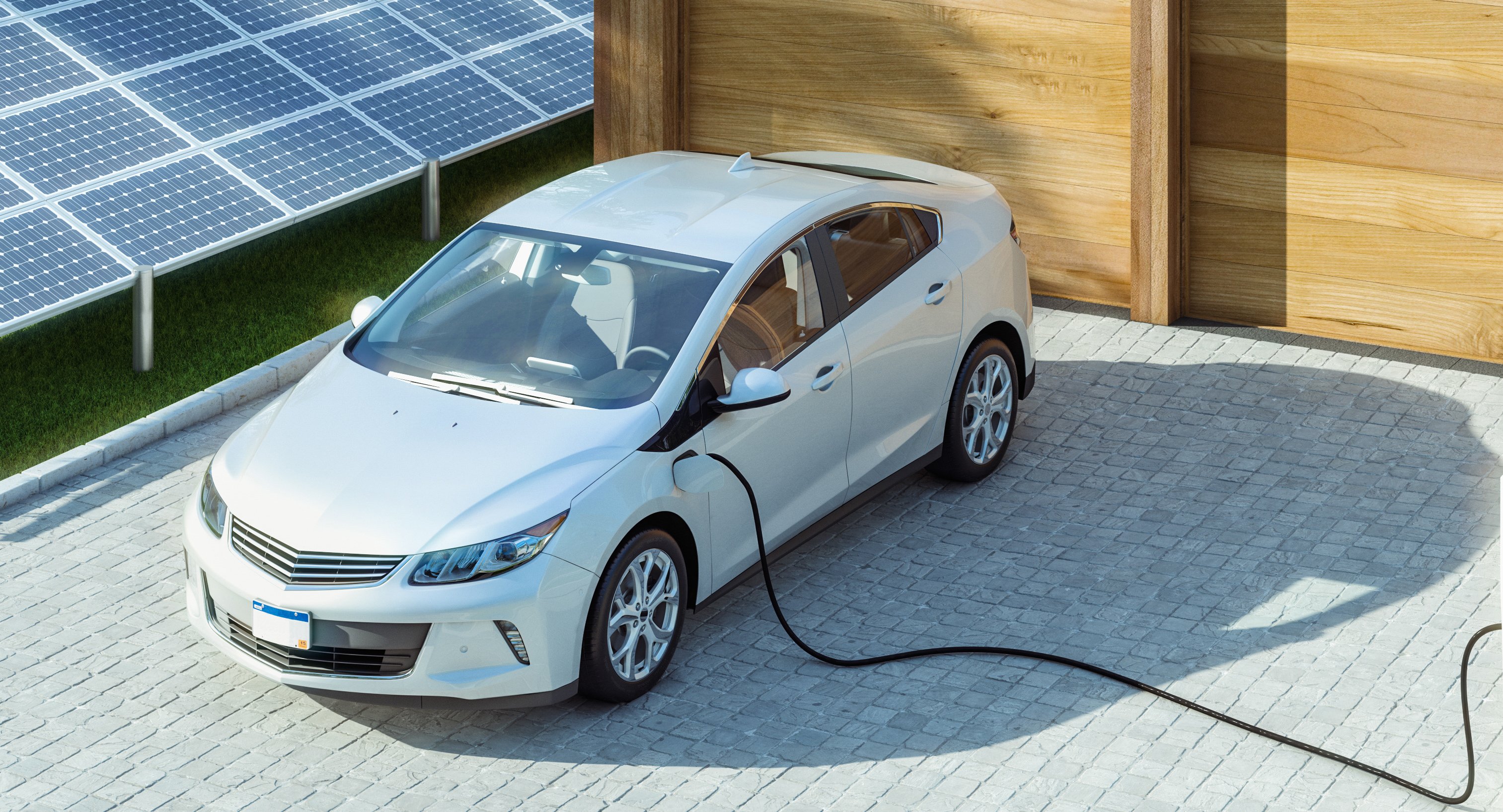 From battery technology to maintenance information, there's plenty to learn about purchasing and owning an electric vehicle.
From battery technology to maintenance information, there's plenty to learn about purchasing and owning an electric vehicle.
Curious about making the switch from an ICE (Internal Combustion Engine) vehicle? Shopping for an EV can seem intimidating. Learn about BEV (Battery Electric Vehicle) maintenance and the benefits of owning a zero emissions vehicle. In honor of electric vehicles and their wonderful qualities, we’re sharing all you should know about EV ownership.

Battery Technology
Did you know that a new study found the lifetime carbon emissions of EVs is much lower than previously expected? That’s great news if you’re about purchasing an EV do contribute to cleaner air. Now, you should learn more about how battery technology works, so here are some important terms to learn:
- Auxiliary battery: Provides electricity to power the vehicle’s accessories.
- Electric traction motor: Uses electricity to drive the vehicle’s wheels.
- Traction battery pack: Delivers electricity to the electric traction motor.
- Charge port: Connects the vehicle to an exterior power supply so the auxiliary battery and traction battery pack can be charged.
- Thermal system: Keeps the motor and other accessories from overheating.
- Power electronics controller: Manages the flow of electricity from the traction battery pack to the motor.
Since EV engines don’t rely on a system of moving gears, they are able to generate more torque than gas-powered vehicles. Expect instant acceleration with power coming from the battery going directly to the wheels.

Electric Car Shopping: New vs Used
The decision between new or used is the next big choice every car buyer makes, even when it comes to EV buying. As with ICE vehicles, there are several pros and cons. For instance, there are perks like the federal tax credits for eligible new EV purchases.
Things to consider when purchasing a new vs used EV:
- Incentives: Aside from the new vehicle federal tax credit, you may still qualify for state or local incentives. Check out our EV incentives guide where we break it down by state.
- Technology: These tend to evolve with each model year, so decide whether the latest and greatest tech is what you’re after before you take the leap
- Cost: Your dollar goes further with an EV. And as with most used cars, you’ll pay far less on a used EV than a new model.
- Battery warranty: The battery on most vehicles likely have its own separate warranty that lasts longer than the car’s warranty. According to the Union of Concerned Scientists, most car makers offer plans that last eight years (sometimes longer, like in California) or 100,000 miles.
- Maintenance: Overall, the maintenance costs on electric cars are far less than ICE vehicles
Either way, it’s important to do your homework on the vehicle you’re shopping for. You’ll need to still work out the financing, insurance, and make and model of your perfect EV. Generally, it comes down to the weighing out the pros vs cons based on your situation and preferences.

Electric Vehicle Ownership & Maintenance
As mentioned, the maintenance on EVs is lower, but that doesn’t mean there’s no maintenance involved.
Here are some helpful Do’s and Don’ts to keep your BEV in tip-top shape:
- Don’t under-charge your battery.
For obvious reasons, you can’t get too far if you haven’t charged your battery enough. Additionally, leaving your EV with little to no charge for too long causes the battery to wear down.
- Don’t over-charge your battery either!
Charging to 100% can actually lower the lifetime of the battery. Try to keep it charged to about 80%.
- Do keep it tidy
Like any car, less weight means a more efficient run. Take heavy items and any unnecessary items out of your trunk. Also clean the interior using the right cleaning solutions and sanitizers for you and your passengers.
- Do perform regular maintenance
Basic care is necessary, so make sure you’re doing regular checks on the fluid levels and changing the air filter.
- Do find an EV-specific mechanic
The dealership is a great place to start, but if not, find someone that understands the specifics of servicing electric motors.
- Don’t neglect the brakes
BEVs have a regenerative braking system that require more attention than conventional cars, so check the brake fluid levels from time to time.
- Do scheduled tire checks
According to Carfax, EVs tend to wear down tires slightly faster than ICE vehicles, so inspect them regularly to make sure the treads aren’t too worn.
- Do cold weather prep and precondition the battery before driving
Be extra careful with battery life during the winter months. Colder temperatures outdoors mean the heating system is using a lot of energy, and battery function is different in chilly weather.
- Do consider heat protection
Hot weather can take a toll on electric vehicles, affecting driving range, battery life, and tire safety. It’s best to store EVs in a covered garage or shade during hot days.
- Do store properly if you won’t be driving for a bit
All cars, regardless of engine type, are built to be driven. For times when you won’t be using your vehicle, take the proper precautions, like unplugging or trickle-charging and turning off energy-draining features.
- Don’t quick-charge too frequently
Regular use of DC quick chargers can reduce BEV battery capacity by 1% each year, according to PluginCars.com.

EV Charging at Home
To avoid frequent quick charging and potential battery capacity reduction, charge from home. Benefits of home charging include convenience, cost-efficiency, and safety. In some areas, you may even be eligible for a rebate when installing a residential charging station.
Installing a residential charging station is simpler than most driver assume. Here are the top things to consider:
-
Cost efficiency with home charging
The cost of charging in public depends on the specific EV. Over time having a home charger will pay for itself compared to the frequency of trips to public charging stations and the fees from those third-party power providers.
-
Different levels of chargers: Level 1 or Level 2?
A level 1 charger plugs into a normal 120-volt electrical outlet, and offers a simple way to power up at home on a budget. The downside to a level 1 charger: it will take 20 hours or more to charge a fully electric battery.
A level 2 charger on the other hand requires professional support for a 240-volt circuit and an output current of 32 Amps, charging up to five times faster than a level 1 charger.
Whether it’s a portable Level 1 charger or a durable Level 2 wallbox in your garage, decide what will allow you to get the best performance out of your EV. -
Charging safely at home
Considering the amount of time, research, and investment in purchasing an EV, make safety a priority for your charging solution. Not only is charging at home convenient, but it is safe to charge in the middle of the night compared to a public charging station.
Additionally, not all home chargers offer the same level of safety. UL listing ensures the charging product has been safety-tested, with tests for thermal safety, electrical shock protection, and outdoor safety rating. -
Charge with solar energy
Having or installing solar panels can increase the efficiency of a residential charging system, offer cost-saving benefits, and further efforts for toward sustainability.
We commit to cleaner air, lower emissions, and a more sustainable future because today is our opportunity to benefit everything and everyone on our planet. Join us by making your next vehicle an electric vehicle.

